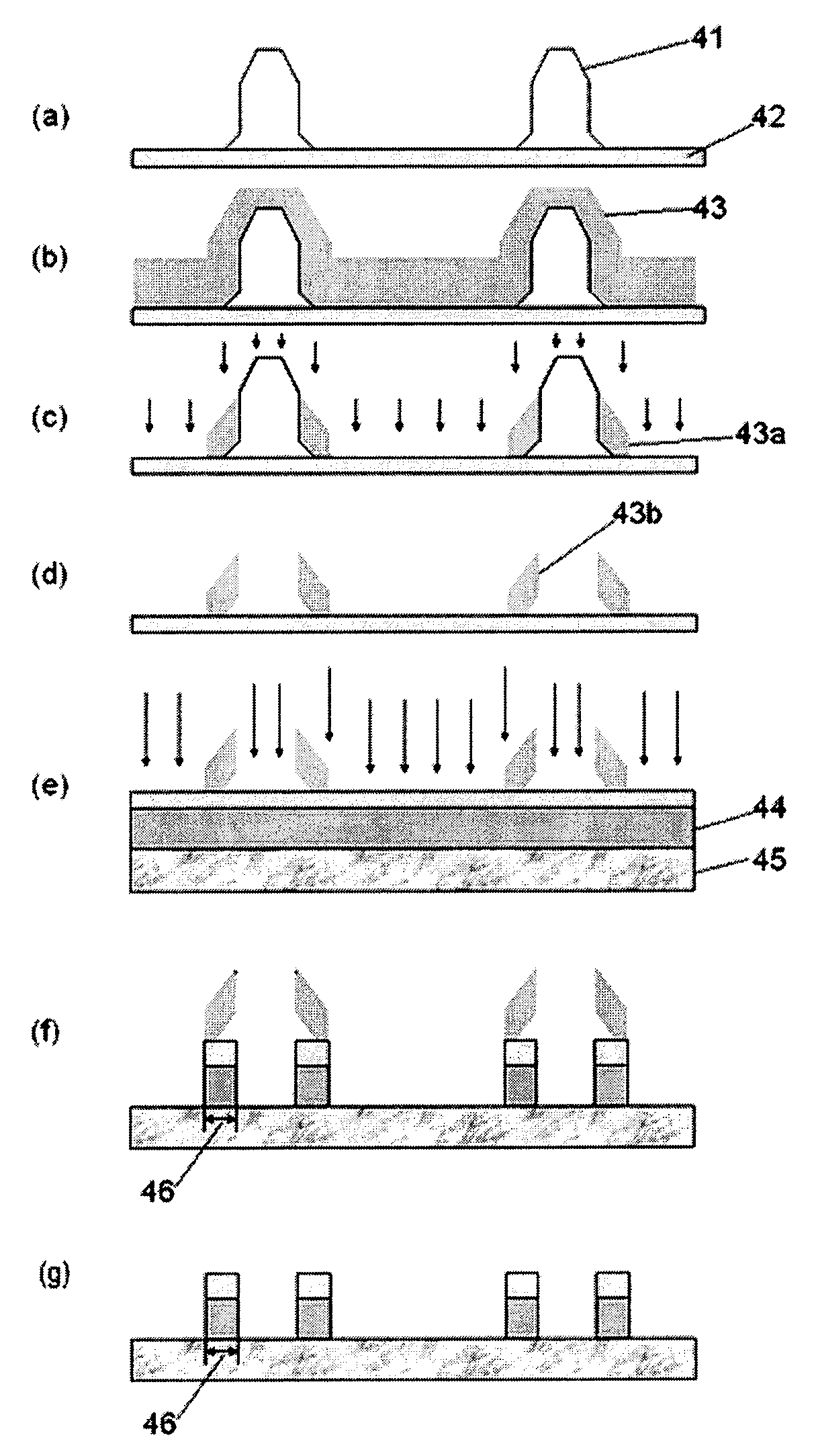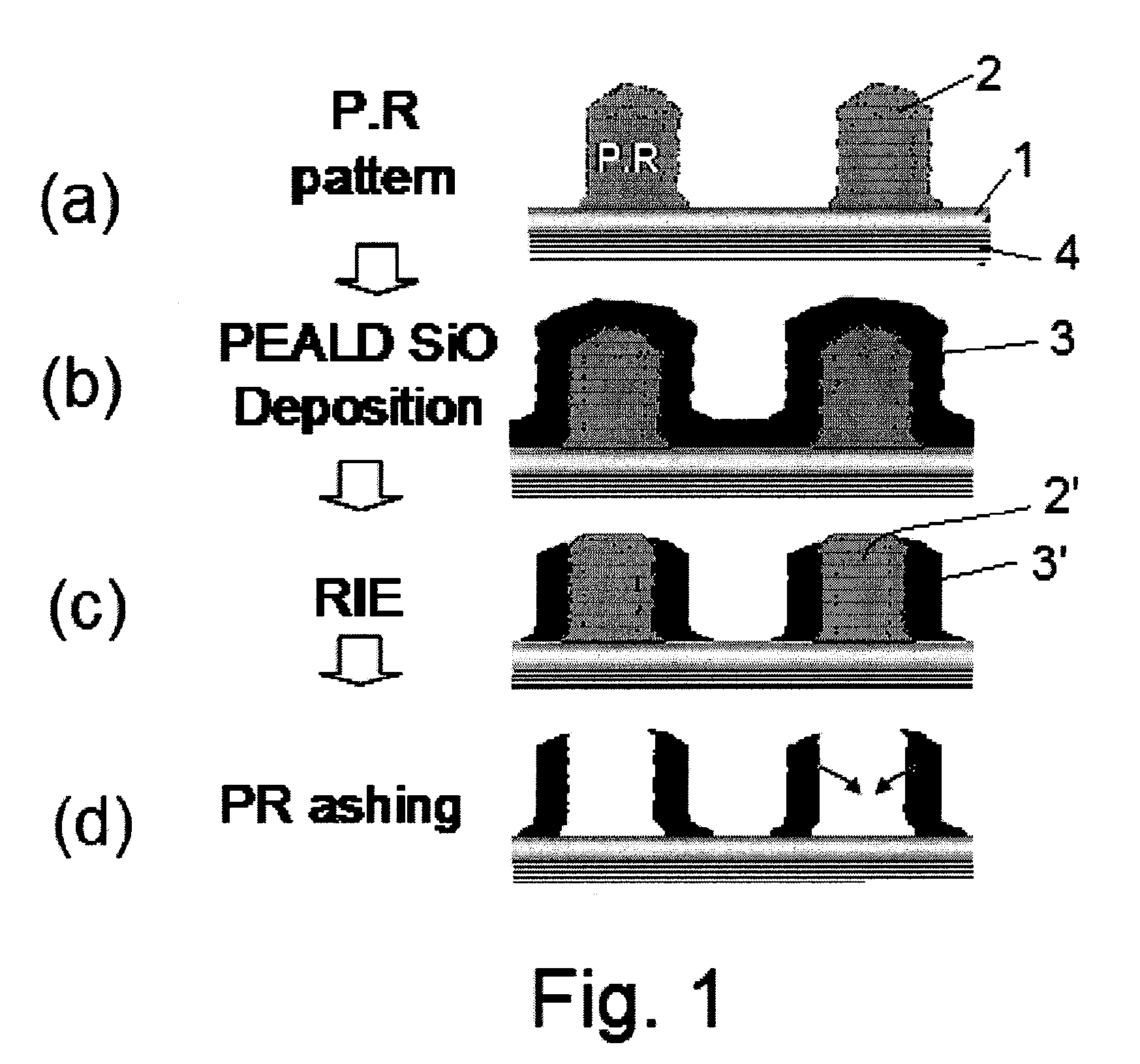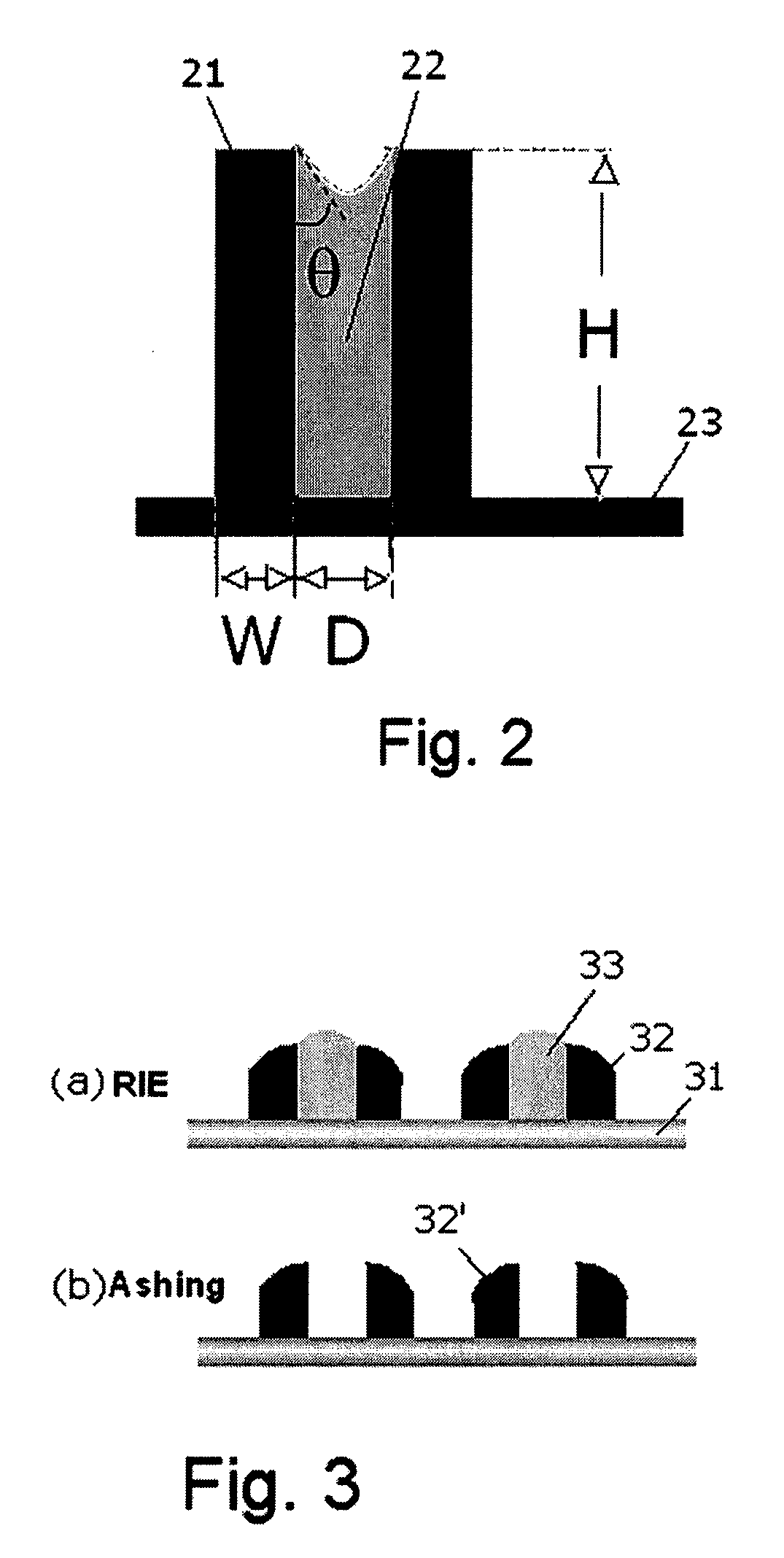Method of forming metal oxide hardmask
a metal oxide and hardmask technology, applied in the field of metal oxide hardmask and spacer film, can solve the problems of unexpected critical dimension (cd) changes, difficulty in forming patterns with pitches, and insufficient lt-sio etching, etc., and achieve the effect of rapid degradation
- Summary
- Abstract
- Description
- Claims
- Application Information
AI Technical Summary
Benefits of technology
Problems solved by technology
Method used
Image
Examples
example
Example 1
[0072]A metal oxide hardmask film was formed on a substrate (Φ200 mm) by PE-ALD under the conditions shown below using the PE-ALD apparatus illustrated in FIG. 6. The sequence in each cycle of PE-ALD is shown in FIG. 7.
[0073]
TABLE 1PrecursorTitanium tetra-isopropoxideDeposition temperature50deg C.Reactant gas flowO2, 500sccmCarrier gas flowAr, 2000sccmDeposition pressure200PaRF power (27.12 MHz)50WDeposition process sequenceStep 1:Step 2:Step 3:Step 4:Precursor feedPrecursor purgeRF ignitionPost purge0.9 sec2.0 sec0.5 sec0.5 sec
[0074]A SiO hardmask (LT-SiO) was also formed on a substrate by PE-ALD under conditions substantially the same as above.
[0075]Dry etch selectivity and wet etch selectivity of each hardmask (also those of standard thermal oxide) were measured, and the results are shown below.
[0076]
TABLE 2ThermaloxidePEALD LT-SiOPEALD TiO2Dry etch rate0.201.000.11(NF3, 100 deg C.)Wet etch rate0.091.000.10(DHF 1:100)
[0077]Hardness and Elastic modulus of each hardmask we...
example 2
[0080]In the same manner as described in Example 1 except for the conditions shown in Table 4 below, films were deposited to compare film growth rates using titanium tetraisopropoxide (TTIP) and tetrakis-dimethylaminotitanium (TDMAT). As can be seen from the table, the film growth rate by TDMAT was nearly two times higher (2-3, 2-4) than that by TTIP (2-1, 2-2). The properties of the obtained film by TDMAT were comparable with those by TTIP, although the wet etch rate of the film by TDMAT was increased by about two to three times that by TTIP. Additionally, by prolonging the RF ignition time (2-5), the mechanical strength was increased and the wet etch rate was reduced.
[0081]
TABLE 42-12-22-32-42-5PrecursorTTIPTTIPTDMATTDMATTDMATRF power50 W100 W50 W100 W100 WRF ignition time per cycle0.4 sec0.4 sec0.4 sec0.4 sec2.0 secGPC(nm / cycle)0.0420.0420.0790.0740.059RI2.4012.4072.2812.3082.415WER (1:100 DHF)Ratio0.750.842.791.470.64compared tothermal oxideHardness(GPa)9.019.398.108.9012.70EM(G...
example 3
[0082]In the same manner as described in Example 1 except for the conditions shown in Tables 5 and 6 below, films were deposited to confirm controllability of film stress. As can be seen from Table 6, the film stress was well controlled by changing plasma-on time (duration of RF ignition) and / or plasma power (RF power), indicating that the films obtained using TTIP are suitable as a spacer having pattern-collapsing resistance. That is, by increasing the plasma-on time, the degree of tensile stress of the film can be reduced, and by increasing plasma power, the degree of tensile stress of the film can be reduced and can even be changed to compressive stress.
[0083]
TABLE 5TiO2SourceTTIP 23 sccmReactant gasOxygen 500 sccmCarrier gasAr2000 sccmPressure200 PaRF powerVariable (X) WSource feedPurge 1Plasma onPurge 20.3 sec 0.6 secVariable (Y) sec0.1 sec
[0084]
TABLE 6ProcessPrecursorPlasma powerPlasma-ontemperaturesupply(X)time (Y)Film stress100 deg C.TTIP 50 W0.4 sec+388 MPa100 deg C.TTIP 50...
PUM
| Property | Measurement | Unit |
|---|---|---|
| vapor pressure | aaaaa | aaaaa |
| temperature | aaaaa | aaaaa |
| temperature | aaaaa | aaaaa |
Abstract
Description
Claims
Application Information
 Login to View More
Login to View More - R&D
- Intellectual Property
- Life Sciences
- Materials
- Tech Scout
- Unparalleled Data Quality
- Higher Quality Content
- 60% Fewer Hallucinations
Browse by: Latest US Patents, China's latest patents, Technical Efficacy Thesaurus, Application Domain, Technology Topic, Popular Technical Reports.
© 2025 PatSnap. All rights reserved.Legal|Privacy policy|Modern Slavery Act Transparency Statement|Sitemap|About US| Contact US: help@patsnap.com



